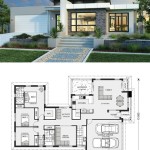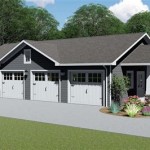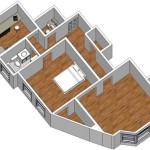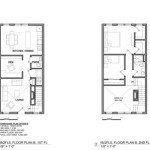Free Apps to Create House Floor Plans
Creating house floor plans can be a complex endeavor, historically necessitating specialized software and significant technical expertise. However, technological advancements have democratized this process, leading to the development of numerous free applications that enable individuals to design and visualize their residential spaces with relative ease. These applications cater to a diverse audience, ranging from homeowners planning renovations to real estate professionals seeking to present property layouts effectively. The efficacy and utility of these free applications hinge on various factors, including user-friendliness, feature set, export options, and platform compatibility.
The prevalence of free floor plan applications has fundamentally altered how individuals approach interior design and space planning. Previously, engaging an architect or interior designer was almost mandatory for creating detailed and accurate floor plans. The advent of these apps empowers users to experiment with different layouts, furniture arrangements, and design concepts independently. This self-sufficiency can translate into significant cost savings and a greater sense of control over the design process.
While offering cost-effectiveness and user empowerment, free floor plan applications also present limitations. The features available in free versions are often restricted compared to paid, professional-grade software. This can manifest as limitations in the complexity of designs that can be created, the availability of specific architectural elements and furniture models, and the quality of rendered images. Consequently, understanding the capabilities and constraints of each application is crucial before committing to a specific design project.
Understanding the Capabilities of Free Floor Plan Apps
The core functionality of most free floor plan applications revolves around the ability to draw walls, define room dimensions, and add architectural features such as doors, windows, and stairs. Applications achieve this through a variety of interfaces, ranging from simple drag-and-drop tools to more sophisticated drawing environments. The degree of precision offered in drawing and dimensioning walls is a critical factor in assessing the application's suitability for a given project. Some applications allow for precise input of wall lengths and angles, while others rely on more intuitive, albeit potentially less accurate, methods of measurement.
Beyond basic drawing tools, many free floor plan apps offer libraries of pre-designed architectural elements and furniture models. These libraries can significantly expedite the design process by providing readily available components that can be inserted into the floor plan. The breadth and quality of these libraries vary widely across different applications. Some libraries may contain a limited selection of generic items, while others offer a more extensive range of branded or style-specific furnishings. The ability to customize these pre-designed components, such as adjusting their dimensions or changing their materials, is also a valuable feature.
Another crucial facet of free floor plan applications is their rendering capabilities. Rendering refers to the process of creating a realistic image of the floor plan, incorporating lighting, textures, and other visual effects. The quality of renderings can greatly influence the user's ability to visualize the finished space and communicate their design ideas effectively. Some free apps offer basic rendering capabilities, producing simple 2D or 3D images. More advanced applications may support more sophisticated rendering techniques, such as ray tracing or global illumination, which can generate highly realistic visualizations. However, these advanced features are often limited or require a paid subscription.
Key Features to Look For in a Free Floor Plan App
When evaluating free floor plan applications, several key features should be considered. The first is user interface design. An intuitive and easy-to-navigate interface can significantly reduce the learning curve and make the design process more enjoyable. The application should provide clear visual cues and helpful tooltips to guide users through the various features and functionalities. A well-designed interface minimizes frustration and allows users to focus on the creative aspects of space planning.
Another important feature is the ability to import existing floor plans or drawings. This functionality can be particularly useful for users who have already created preliminary sketches or have access to architectural blueprints. Importing an existing drawing allows users to trace over the existing layout and create a digital floor plan more quickly. The application should support common file formats, such as PDF, DWG, or JPEG, to ensure compatibility with a wide range of sources.
The availability of dimensioning tools is also critical. Accurate dimensions are essential for ensuring that the floor plan accurately reflects the actual size and proportions of the space. The application should provide tools for measuring distances, angles, and areas. It should also allow users to customize the display of dimensions, such as choosing the units of measurement (e.g., feet, meters, inches) and the level of precision displayed. The ability to add annotations and labels to the floor plan is also important for communicating specific details and design intentions.
The ability to export the completed floor plan in various formats is another crucial feature. This allows users to share their designs with others, such as contractors, architects, or family members. The application should support common file formats, such as PDF, DWG, or JPEG. Some applications may also offer the option to export the floor plan in a 3D model format, such as OBJ or STL, which can be used for further editing or visualization in other software.
Limitations and Considerations When Using Free Apps
Despite the benefits of free floor plan applications, it is essential to acknowledge their limitations. The primary limitation is often the restricted feature set compared to paid software. Free versions may lack advanced features such as automatic room recognition, detailed object libraries, advanced rendering options, and collaboration tools. These limitations can restrict the complexity and realism of the floor plans that can be created.
Another common limitation is the presence of watermarks or advertisements. Many free applications display a watermark on the exported floor plans, which can be undesirable for professional or presentation purposes. Some applications may also display advertisements within the interface, which can be distracting and disruptive. Users should carefully review the terms of use and privacy policies of the application to understand the extent to which their data may be collected and used for advertising purposes.
The accuracy of free floor plan applications can also be a concern. While most applications strive to provide accurate drawing and dimensioning tools, the level of precision may not be comparable to that of professional-grade software. This is particularly true for applications that rely on intuitive drawing methods rather than precise input of dimensions. Users should carefully verify the accuracy of the floor plan before using it for construction or renovation purposes. It is always advisable to consult with a qualified architect or engineer to ensure the structural integrity and compliance with building codes.
Finally, users should be aware of the potential for compatibility issues. Different applications may use different file formats or require different operating systems. It is important to ensure that the application is compatible with the user's device and that the exported floor plans can be opened and viewed by the intended recipients. Users should also consider the long-term availability of the application and the possibility that it may be discontinued or updated in the future. Backing up floor plans regularly is advisable to prevent data loss.
In summary, free floor plan applications offer a valuable tool for individuals seeking to design and visualize their residential spaces. These applications empower users to experiment with different layouts, furniture arrangements, and design concepts independently. However, it is crucial to understand the capabilities and limitations of each application before committing to a specific design project. By carefully considering the key features, limitations, and considerations outlined above, users can make informed decisions and effectively utilize free floor plan applications to achieve their design goals.
8 Best Free Interior Design Apps Tools And Inspirations Essential Home
Home Design 3d Apps On Google Play

3 Free Best Floor Plan Creator Apps For Ios

House Design 3d Floor Plan App For Android Bazaar

Create And Visualize House Plans In Minutes Roomsketcher

Floor Plan Creator And Designer Free Easy App

Homebyme House Planner 3d On The App

Planner 5d House Design Home In 3d
8 Of The Best Free Interior Design Tools Apps And

The 10 Best Ai Apps And Tools For Interior Design In 2024
Related Posts








